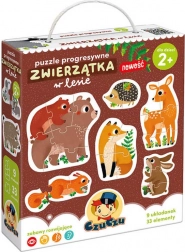
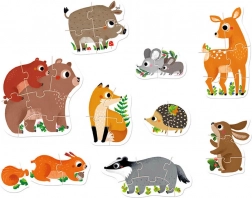

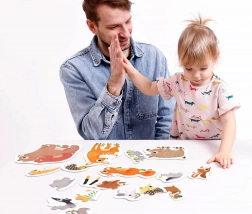
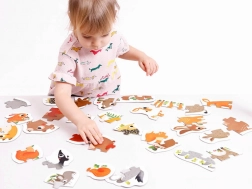
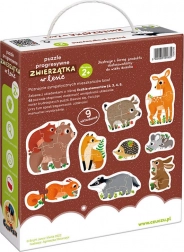
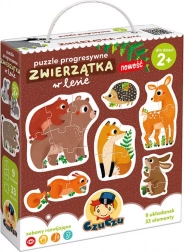


Puzzles with 2–6 pieces let children gradually increase difficulty and build confidence while playing.
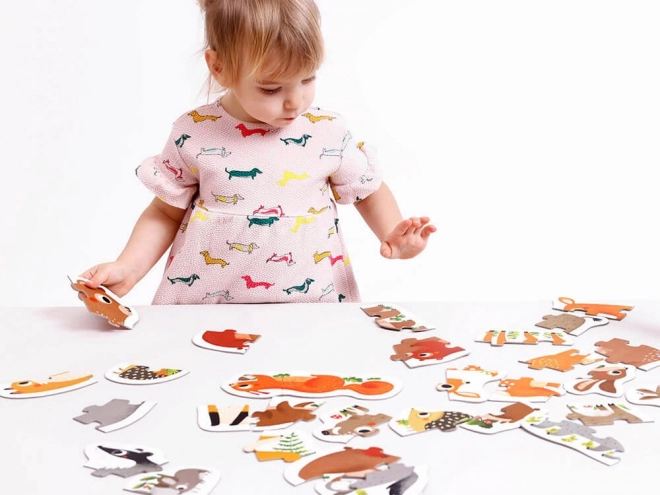
Name the animals, colors, and body parts, mimic sounds, and create short stories from the forest.

Doing puzzles together supports communication, concentration, and fine motor skills – ideal quality time spent together.
This CzuCzu progressive puzzle set is ideal as a first multi-piece puzzle for children aged 2 and up. The gradual difficulty (2, 3, 4, 5, and 6 pieces) supports natural skill development and confidence while assembling. Beautiful illustrations depict favorite forest animals – from little mice to bears.
Playing with puzzles helps children expand vocabulary (naming animals, colors, and body parts), trains hand–eye coordination, and supports concentration. Parents can include simple games and questions, mimic animal sounds, or search together for information about forest life.